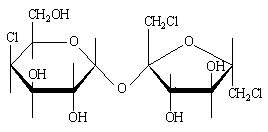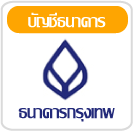SYNONYMS | 4,1',6'-trichlorogalactosucrose; INS No. 955 |
DEFINITION | |
Chemical names | 1,6-Dichloro-1,6-dideoxy-ß-D-fructofuranosyl-4-chloro-4-deoxy-alpha-D-galactopyranoside |
C.A.S. number | 56038-13-2 |
Chemical formula | C12H19Cl3O8 |
Structural formula |  |
Formula weight | 397.64 |
Assay | Not less than 98% and not more than 102% calculated on an anhydrous basis |
DESCRIPTION | White to off-white, practically odourless crystalline powder |
FUNCTIONAL USES | Sweetener |
CHARACTERISTICS | |
IDENTIFICATION | |
| Freely soluble in water, methanol and ethanol; slightly soluble in ethyl acetate |
Infrared absorption | The infrared spectrum of a potassium bromide dispersion of the sample corresponds with the reference infrared spectrum in the Appendix |
| The main spot in the test solution has the same Rf value as that of the main spot of Standard Solution A obtained in the test for Other chlorinated disaccharides. |
PURITY | |
| Not more than 2.0% (Karl Fischer Method) |
| | [alpha] 20, D: Between +84.0 and +87.5o (10% w/v solution) |
| Not more than 0.7% |
Other chlorinated disaccharides | Passes test See description under TESTS |
Chlorinated monosaccharides | Passes test See description under TESTS |
Triphenylphosphine oxide | Not more than 150 mg/kg See description under TESTS |
Methanol | Not more than 0.1% See description under TESTS |
| Not more than 3 mg/kg (Method II) |
| Not more than 10 mg/kg Test 2 g of the sample as directed in the Limit Test (Method II) |
TESTS | |
PURITY TESTS | |
Other chlorinated disaccharides | TLC Plates: Use reverse phase Thin-layer chromatography plates coated with 0.20 mm layer of silica gel absorbent (e.g., Whatman LKC18). Mobile Phase: Mix 7 volumes of a 5.0% w/v aqueous solution of sodium chloride and 3 volumes of acetonitrile. Spray Reagent: Use 15% v/v solution of concentrated sulfuric acid in methanol. Standard Solutions: Dissolve 1.0 g of sucralose Reference Standard (available e.g. from Tate & Lyle Speciality Sweeteners, PO Box 68 Whiteknights, Reading, RG6 2 BX, United Kingdom) in 10 ml of methanol (Solution A). Dilute 0.5 ml of Solution A with methanol to 100 ml (Solution B). Test Solution: Dissolve 1.0 g of sample in 10 ml of methanol Procedure Apply 5 µl each of Solution A, Solution B and Test Solution to the bottom of the chromatographic plate. Place the plate in a suitable chromatography chamber containing freshly prepared Mobile Phase and allow the solvent front to ascend 15 cm. Remove the plate from the chamber, allow it to dry and spray with Spray Reagent. Heat the plate in an oven at 125o for 10 min. The main spot in the Test Solution has the same Rf value as the main spot in Solution A and no other spot in the Test Solution is more intense than the 0.5% spot in Solution B. |
Chlorinated monosaccharides | TLC plates: Use a thin-layer chromatography plate coated with a 0.25 mm thickness of Merck-silica gel 60 or equivalent. Spray Reagent: Dissolve 1.23 g p-anisidine and 1.66 g phthalic acid in 100 ml methanol. Store the solution in darkness and refrigerate to prevent it becoming decolourised. Discard if solution becomes discolored. (Note: p-anisidine is toxic by skin absorption and inhalation and should be used with due caution). Standard Solution A: Dissolve 10.0 g of mannitol, weighed to 0.001 g, in water in a 100 ml volumetric flask, and dilute to volume with water. Standard Solution B: Dissolve 10 g of mannitol and 40 mg of fructose (Analar grade) in 25 ml of water in a 100 ml volumetric flask and make up to volume with water. Sample Solution: Dissolve 2.5 g of sample in 5 ml of methanol in a 10 ml volumetric flask and make up to volume with methanol. Procedure: Spot 5 µl of each of Standard Solutions A and B onto the TLC plate applying the solution slowly in 1 µl aliquots and allowing the plate to dry between applications. Spot 5 µl of the Sample Solution onto the plate in a similar manner. The three spots should be of similar size. Spray the plate with Spray Reagent and heat at 100 ± 2o for 15 min. Immediately after heating, view the plate against a dark background. The spot from the Sample Solution is not more coloured than the spot from Solution B (equivalent to a limit of 0.1% maximum total chlorinated monosaccharides). (Darkening of the mannitol spot from Standard Solution A indicates that the plate has been held too long in the oven, and a second plate should be prepared.) |
Triphenylphosphine oxide | Chromatographic system: Typically a high pressure liquid chromatograph, operated at room temperature, is fitted with a radial compression module containing a 5 µm C18 Rad Pak reverse phase column (10 cm x 8 mm). The mobile phase is maintained at a pressure and flow rate (typically 1.5 ml/min) capable of giving the required elution time. The chromatograph is equipped with a UV detector (220 nm). Mobile Phase: Add 67 volumes of acetonitrile (HPLC grade, far UV, filtered through a 0.45 µm Millipore filter or equivalent) to 33 volumes of water (glass distilled, filtered through a 0.45 µm Millipore filter or equivalent). Mix and de-gas thoroughly. Standard Solution: Weigh accurately 100 mg of triphenylphosphine oxide into a 10 ml volumetric flask. Dissolve and make up to volume using the Mobile Phase. Take 1.0 ml of the resulting solution and make up to 100 ml with Mobile Phase. From this solution prepare a further 100-fold dilution with Mobile Phase and use this as the Standard Solution. Filter through a 0.45 µm Millipore filter or equivalent. Test Solution: Weigh accurately about 100 mg of sample into a 10 ml volumetric flask. Dissolve and make up to volume with Mobile Phase. Filter through a 0.45 µm Millipore filter or equivalent. Record the weight of sample as Wt mg. Procedure: Inject duplicate 25 µl portions of the Standard and Test Solutions into the chromatograph. Under the conditions stated above the retention time for triphenylphosphine oxide is 6 min. Record the mean peak areas for the Standard and Test Solutions as As and At respectively. Calculate the concentration of triphenylphosphine oxide (TPPO) in the sample from the following formula:  |
Methanol | Apparatus: Use a suitable gas chromatograph equipped with a hydrogen flame ionization detector containing a 2.1 m x 4.0 mm (id) glass column packed with Porapak PS 80-100 mesh or equivalent materials. Operating conditions: The operating conditions may vary depending upon the particular instrument used but a suitable chromatogram may be obtained by using the following conditions: - Column temperature: 150o (isothermal) - Inlet temperature: 200o - Detector temperature: 250o - Carrier gas nitrogen:20 ml/min Standard Solution: Using a 2.0-ml class A volumetric pipet, pipet 2.0 ml of methanol into a 100-ml volumetric flask, dilute to volume with pyridine, and mix. Transfer 1.0 ml of this solution to a 100-ml volumetric flask, dilute to volume with pyridine, and mix. Sample Solution: Weigh accurately about 2 g of the sample into a 10-ml volumetric flask, dilute to volume with pyridine, and mix. Procedure: Inject a 1-µl portion of the Standard Solution onto a gas chromatography column, obtain the chromatogram, and measure the area of the peak produced. The relative standard deviation for replicate injections is not more than 2.0%. Calculate the mean peak areas for the Standard Solution. Similarly, inject a 1-µl portion of the Sample Solution into the gas chromatograph, and measure the areas of the peaks produced by methanol. Calculate the mean peak areas, and determine the methanol concentration using the following formula:  where SA = the sample area CS = the concentration of methanol in the standard in percent (volume of methanol X dilution factor X density of solvent equals 2 X 10-4 X 0.79 X 100) VS = the volume of the Sample Solution AS = the standard area WS = the weight of the sample |
METHOD OF ASSAY | Chromatographic system: Fit a high pressure liquid chromatograph, operated at room temperature, with a radial compression module containing a 10 cm 5 µm C18 reverse phase column. The mobile phase is maintained at a pressure and flow rate (typically 1.5 ml/min) capable of giving the required elution time (see System Suitability Test). An ultraviolet detector that monitors absorption at 190 nm, or a refractive index detector, is used. Mobile Phase: Add 150 ml of acetonitrile (HPLC grade, far UV, filtered through a 0.45 µm Millipore filter or equivalent) to 850 ml of water (glass distilled, filtered through a 0.45 µm Millipore filter or equivalent). Mix and de-gas thoroughly. Standard Solution: Weigh accurately about 250 mg of sucralose Reference Standard into a 25 ml volumetric flask. Dissolve and make up to volume using the Mobile Phase. Filter the solution through a 0.45 µm Millipore filter or equivalent. Record the weight of Reference Standard as Ws. Test solution: Weigh accurately about 250 mg of sample into a 25 ml volumetric flask. Dissolve and make up to volume using the mobile phase. Filter the solution through a 0.45 µm Millipore filter or equivalent. Record the weight of sample as Wt. System Suitability Test: Inject duplicate 20 µl portions of Standard Solution into the chromatograph. The retention time of the sucralose should be approximately 9 min. (NOTE: The retention time quoted is appropriate for a 10 cm 5 µm Rad-Pak C18 column. If a column of a different make or length is used it may be necessary to adjust the proportion of acetonitrile in the eluent to obtain the required retention time). The co-efficient of variation (100 x standard deviation divided by mean peak area) for the peak areas should not exceed 2%. Procedure: Analyse the Test Solution under the conditions described above, making duplicate 20 µl injections, and calculate the mean peak area. Calculate the percentage purity from the relative peak areas of the Test (At) and Standard (As) Solutions according to the following formula:  Calculate the percentage purity on a water-free and methanol-free basis using the values obtained in the tests for water and methanol. |
| Infrared spectrum | Sucralose |





















